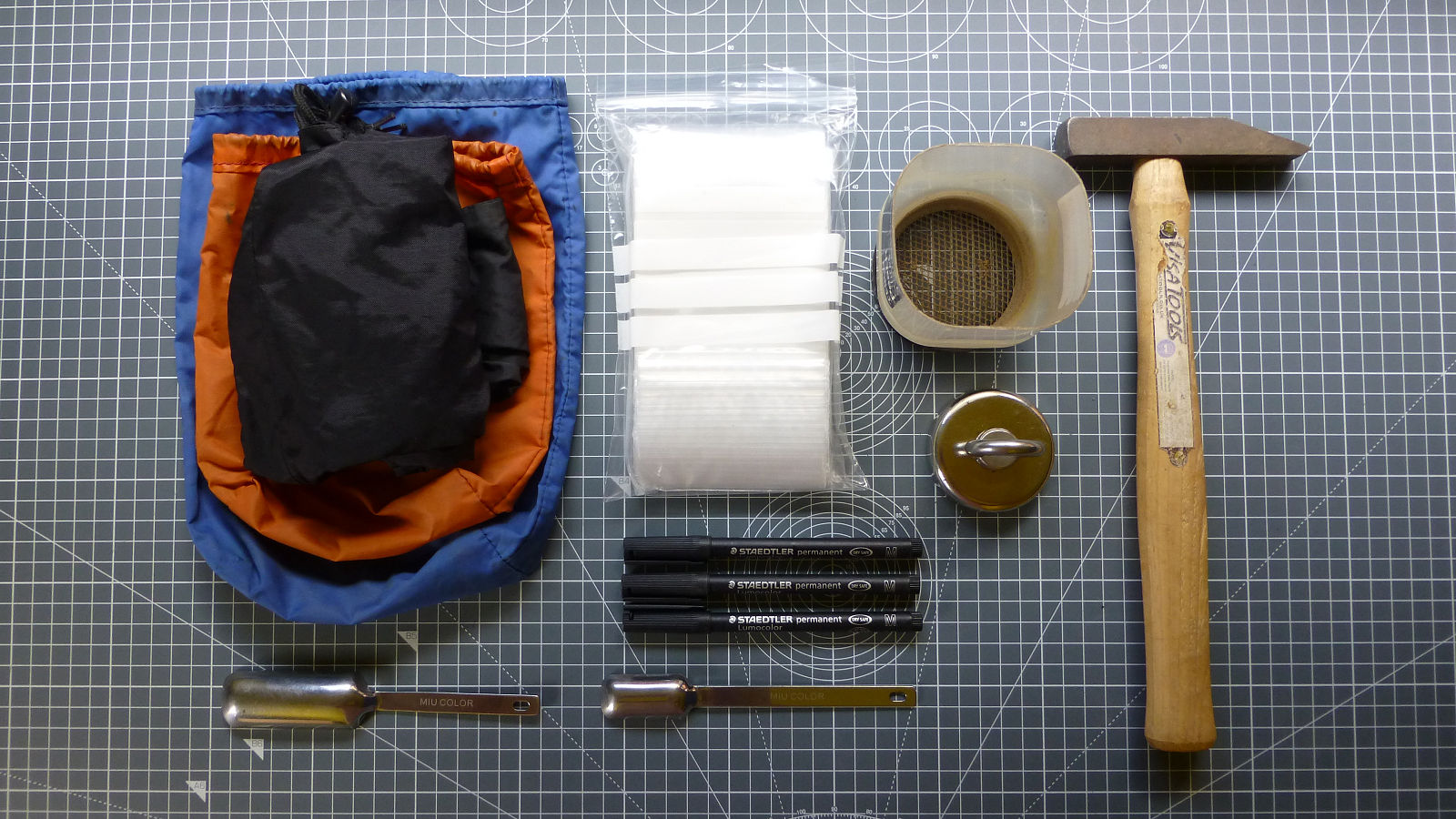Actually collecting sand is not difficult, it’s just case of going to a suitable location such as a beach and looking for any sand that attracts your interest. Even on a single beach different colours, grades and compositions of sand can be found in a relatively small area. In fact, at one beach I visited I collected 18 different samples – you can see how quickly a collection can grow!
To collect the sand, use a spoon or similar implement to scoop the sand into your sampling bag or container. A good tip is to label the sampling container before you start scooping – a good habit to get into as it avoid getting things mixed up if done later and its easier to write on the flat bag rather than when its full of sand. Everyone has their own method of working and I suppose my own will do as an example. You can adopt it or develop your own as you wish.
When first on location it’s very much a case of simply wandering around looking for samples to collect. At first you might not see very much but with experience you will soon known the ideal places to search.
My own method after a suitable sample has been located is to first label the sampling bag, using a permanent marker pen to write the date, the name of the location and where the sample was collected, on the bag. If you don’t have bags with write-on panels, an alternative would be to attach a sticky label and write on that. Then I use a spoon to scoop the sand into the labelled sampling bag which is carefully sealed. This bag then goes into a large stuff sack. With samples holding a lot of moisture, double bagging is a good tip to help prevent water getting everywhere.
How much sand you collect is very much a personal matter. As a rule you need at least enough to fill the container you’ve selected to display your samples – if that’s what you are planning to do. My own method to ensure this is to fill the sampling bag to no more than half way full. This gives more than enough to fill the 15 ml glass vials I use for storage and display. You can then be sure you have enough. It might seem more than you need but there will always be some waste such as pebbles or organic matter you don’t need.
Remember – The less you collect the less you have to carry!
Then it’s just a case of looking for further samples and repeating the same procedure. All this might seem rather long-winded but it’s important to be organized and methodical from the very start. A collection can soon run into many hundreds of samples over a short period of time, in fact, some collectors have more than 10,000 samples, so it pays to be organized from the outset.
Copyright ©2020 Gary Buckham. All rights reserved.


